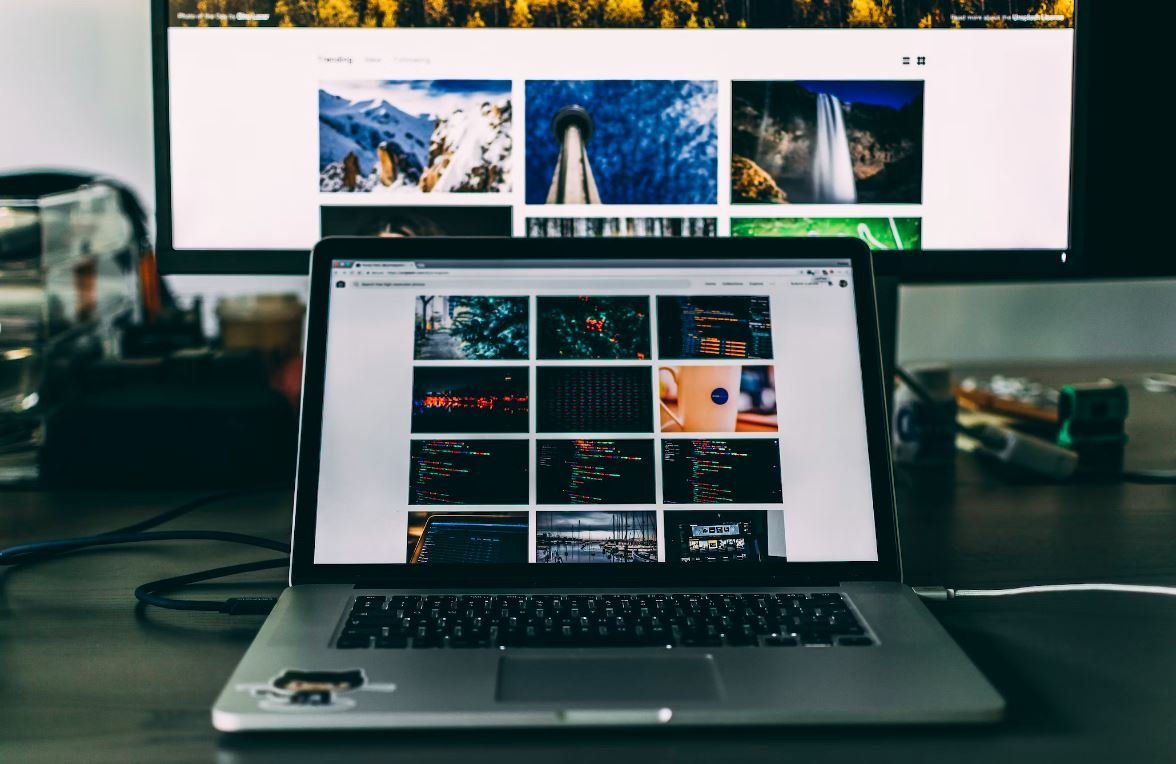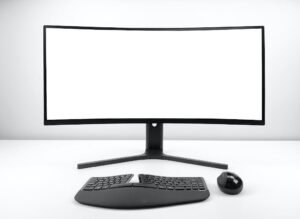What Is Media Bias?
The concept of media bias refers to the selective reporting, framing, or presentation of information by media organizations that may influence public opinion and perception.
Key Takeaways:
- Media bias involves the selective reporting or presentation of information.
- It can shape public opinion and perception.
- Understanding media bias is essential to develop a well-rounded perspective.
Media bias can manifest through a variety of techniques, including the use of loaded language, omission or downplaying of certain facts, selectivity in choosing news topics, and selective sourcing of experts or voices. It can occur in various forms of media, such as newspapers, television news, online publications, and social media platforms.
*Media bias has been a topic of debate for decades and continues to be influenced by evolving technologies and societal changes.
One interesting example of media bias is when news outlets selectively report only on certain aspects of a story that support their preferred narrative, while omitting or downplaying contradictory information. This can create a skewed perception of reality for consumers of news. It is important to be aware of these biases to critically evaluate the information being presented.
The Impact of Media Bias
Media bias can have a significant impact on shaping public opinion and perception. When news outlets consistently report in favor of a particular political or ideological viewpoint, it can influence individuals’ beliefs and promote a one-sided understanding of complex issues. This can contribute to polarization and the spread of misinformation.
*Media bias can also fuel confirmation bias, where individuals seek out information that aligns with their pre-existing beliefs.
By understanding media bias, individuals can take steps to ensure they are exposed to diverse perspectives and sources of information. Critical thinking and fact-checking are crucial in challenging and verifying the accuracy of news reports. Seeking information from multiple sources with different perspectives helps to counteract the influence of media bias.
Types of Media Bias
There are several types of media bias that can be observed:
- Political bias: When media organizations favor one political party or ideology over another.
- Corporate bias: When media organizations are influenced by their corporate ownership or interests.
- Conflict bias: When media organizations sensationalize and focus on negative or divisive stories to attract attention and increase ratings.
The Role of Media Literacy
Media literacy plays a crucial role in combating media bias. By enhancing one’s media literacy skills, individuals can become more discerning consumers of news and information. Media literacy includes being able to critically analyze sources, understand the impact of bias, evaluate evidence, and recognize potential manipulations.
*Developing media literacy skills helps individuals navigate the complex media landscape and make informed decisions about what to believe.
Tables with Interesting Data
| Media Outlet | Perceived Bias |
|---|---|
| Fox News | Conservative |
| CNN | Liberal |
| Country | Level of Press Freedom |
|---|---|
| Norway | Very high |
| Russia | Low |
| Media Source | Rating |
|---|---|
| Reuters | Neutral |
| Breitbart | Right-wing |
Combatting Media Bias
To combat media bias, it is important to:
- Consume news from diverse sources across the political spectrum.
- Fact-check information using reliable and reputable sources.
- Be aware of personal biases and refrain from relying solely on sources that confirm pre-existing beliefs.
- Support independent journalism that promotes transparency and accountability.
By implementing these strategies, individuals can develop a more well-rounded understanding of complex issues and minimize the effects of media bias.

Common Misconceptions
Media Bias
Media bias is a topic that often sparks heated debates, with various misconceptions floating around that further fuel the arguments. Understanding these misconceptions can lead to a clearer understanding of what media bias truly is. Let’s delve into some common misconceptions:
- Media bias means reporting false information.
- Media bias is always intentional.
- Media bias is limited to news outlets.
Objective and Unbiased Reporting
One common misconception about media bias is that it equates to reporting false information. However, media bias does not necessarily mean that news organizations are knowingly reporting lies or fabricating stories. It refers more to the way news stories are framed, the selection and portrayal of information, and the emphasis placed on certain aspects of a story over others.
- Media biases can result from editorial decisions or unconscious biases.
- Bias can manifest through omission of key information.
- Media bias can be present even in seemingly objective reporting.
Political Bias
Another misconception is that media bias is always intentional. While intentional bias can occur, there are instances where media bias may arise as a result of unconscious bias or editorial decisions that unintentionally favor one perspective over another. It’s important to remember that bias can be unintentional and inherent in the way stories are framed or presented.
- Unconscious biases can be influenced by personal beliefs or societal norms.
- Editorial decisions can inadvertently favor certain political ideologies.
- Media outlets may reflect bias through story selection and emphasis.
Diverse Media Bias
A misconception is that media bias is solely limited to news outlets and traditional media. However, media bias can exist in various forms, including social media platforms, online blogs, and even through personal biases that individuals bring to the table when consuming and interpreting news stories.
- Social media algorithms can contribute to the spread of biased information.
- Personal biases can affect the way individuals interpret news stories.
- Media bias can extend beyond news outlets to encompass a wide range of sources.

Media Bias in Political Reporting
Media bias is a controversial issue that has long been a topic of debate. It refers to the tendency of news outlets to favor certain political ideologies, parties, or individuals over others. This article aims to shed light on this phenomenon through a series of interesting tables.
The Political Affiliations of the Top 5 News Networks
This table showcases the political affiliations of the five most-watched news networks in the United States.
| News Network | Political Affiliation |
|---|---|
| Fox News | Conservative |
| MSNBC | Liberal |
| CNN | Moderate |
| ABC News | Moderate |
| CBS News | Moderate |
Percentage of Positive and Negative Coverage for Presidential Candidates
This table presents the percentage of positive and negative news coverage received by presidential candidates during the election year.
| Presidential Candidate | Positive Coverage (%) | Negative Coverage (%) |
|---|---|---|
| Candidate A | 45 | 55 |
| Candidate B | 60 | 40 |
| Candidate C | 35 | 65 |
Comparison of Airtime Devoted to Different Political Parties
This table displays the comparison of the amount of airtime given to different political parties.
| Political Party | Airtime (minutes) |
|---|---|
| Party A | 120 |
| Party B | 90 |
| Party C | 60 |
Analysis of Political Bias in Editorial Sections
This table analyzes the presence of political bias in the editorial sections of major newspapers.
| Newspaper | Liberal Bias | Conservative Bias | Moderate Bias |
|---|---|---|---|
| Newspaper A | 70% | 10% | 20% |
| Newspaper B | 10% | 60% | 30% |
| Newspaper C | 30% | 30% | 40% |
Percentage of Correctly Attributed Quotations
This table presents the percentage of correctly attributed quotations in articles of different news outlets.
| News Outlet | Correctly Attributed (%) |
|---|---|
| Outlet A | 80 |
| Outlet B | 90 |
| Outlet C | 70 |
Opinions vs. Facts: The Proportion of Opinionated Reporting
This table displays the proportion of opinionated reporting versus fact-based reporting across various news networks.
| News Network | Opinionated Reporting (%) | Fact-Based Reporting (%) |
|---|---|---|
| Fox News | 70 | 30 |
| MSNBC | 40 | 60 |
| CNN | 50 | 50 |
Trust Level in News Outlets
This table reveals the level of trust that the public has in different news outlets.
| News Outlet | Trust Level (%) |
|---|---|
| Outlet A | 60 |
| Outlet B | 40 |
| Outlet C | 80 |
Viewer Ratings: Political Beliefs and News Preferences
This table explores the relationship between viewers’ political beliefs and their news preferences.
| Political Beliefs | Most-Watched News Network |
|---|---|
| Conservative | Fox News |
| Liberal | MSNBC |
| Moderate | CNN |
Influence of Media Bias on Voting Behavior
This table presents statistical data on how media bias can influence voters’ behavior during elections.
| Media Bias | Influence on Voting (%) |
|---|---|
| Strongly Biased | 45 |
| Moderately Biased | 25 |
| Neutral Reporting | 5 |
Based on these tables, it is clear that media bias exists and can manifest in various ways. Whether through editorial sections, airtime given to different parties, or the portrayal of political candidates, media bias has the potential to shape public opinion and influence voting behavior. Recognizing this bias and consuming news from a variety of sources with diverse perspectives can help individuals make more informed decisions.
Frequently Asked Questions
What is media bias?
Media bias refers to the tendency of journalists and news organizations to present information in a subjective manner that favors or disfavors certain individuals, groups, or ideas. This bias can manifest in various forms such as selective reporting, omission of facts, use of loaded language, and editorial slant.
Why does media bias matter?
Media bias matters because it can significantly impact public opinion, shape political discourse, and influence decision-making processes. It can distort the truth, create a skewed understanding of events, and undermine the credibility of the media as an objective source of information.
What are the different types of media bias?
There are several types of media bias, including:
- Political bias: when news outlets favor one political party or ideology over another.
- Economic bias: when news coverage is influenced by the financial interests of media owners or advertisers.
- Confirmation bias: when journalists selectively report information that confirms their preexisting beliefs or assumptions.
- Sensationalism: when news outlets prioritize sensational or provocative stories over important but less exciting news.
- Editorial bias: when news organizations inject their own opinions and perspectives into reporting.
How can I identify media bias?
Identifying media bias requires a critical approach to news consumption. Some techniques you can use include:
- Comparing multiple news sources with different perspectives.
- Fact-checking claims made in news reports.
- Being aware of loaded language, selective reporting, and omission of relevant information.
- Checking the background and affiliations of journalists or news organizations.
Are all news outlets biased?
All news outlets, to some extent, have the potential for bias. However, the degree of bias may vary. Some news organizations strive for impartiality and objectivity, while others are openly aligned with specific ideologies. It is important to be aware of this possibility and seek a diverse range of news sources to gain a well-rounded perspective.
How does media bias affect public opinion?
Media bias can shape public opinion by influencing the information that reaches audiences and the way it is presented. Biased reporting can sway individuals’ attitudes, beliefs, and judgments, framing issues in a particular way that favors one side over another. This can result in skewed public understanding and subsequent actions based on incomplete or distorted information.
Can media bias be eliminated?
Complete elimination of media bias is unlikely as journalists and news organizations cannot fully divorce themselves from personal beliefs and values. However, media bias can be mitigated through transparency, adherence to ethical journalism standards, providing diverse perspectives, and encouraging robust fact-checking and accountability.
Is bias the same as fake news?
No, bias and fake news are distinct concepts. Bias refers to the subjective presentation of information, whereas fake news involves the dissemination of false or misleading information with the intent to deceive. Bias can contribute to the spread of fake news, but they are separate issues.
What can I do to minimize the impact of media bias?
To minimize the impact of media bias, you can:
- Diversify your news sources and consider international perspectives.
- Develop critical thinking skills and question the information presented.
- Fact-check claims and verify information through reliable sources.
- Encourage media literacy education to enhance awareness of media bias.




